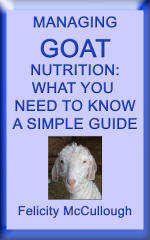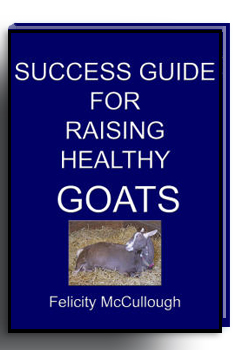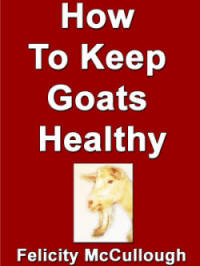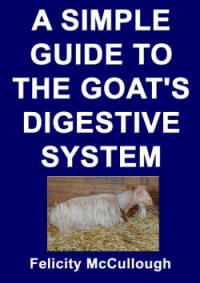Schmallenberg Virus in Goats: An Emerging Threat
Goat Knowledge Series Articles 1
Felicity McCullough
Index of Goat Information
Anglo-Nubian Goats
Boar
Goats
Blog about Goats
Cheese Making Goat
Christmas Goats
Cooking Goat
Diseases of Goats
Goat Basics
Goat
Books
Goat Character
Goat Fun
Goat Giving Birth Video
Goats Home
Goat Humour
Goat Island
Goat Knowledge
Goat Links
Goat Lotions
Goat
Poetry
Goat Pregnancy
Goat Soap
Goat
Songs
Goat Stories
Goat Transgenics
Goat Viruses
How to Raise Goats
India Goat Farming
Milking Goats
Nigerian Dwarf Goat
Nimbkar Boar Goat
Reproduction
Software
Goat Recording
Spider Goats
Videos Goats
Weighing Goats
Table of Contents
Background - The Outbreak
Currently in Europe and the UK, there is a concern over a recent outbreak of a new virus, called the Schmallenberg Virus.
20 December 2012: issued by the Department for Environment, Food and Rural Affairs (DEFRA) regarding a few outbreaks that occurred in cattle over the summer of 2011 in Germany and the Netherlands.
5 January 2012: The first goat farm affected was reported in Belgium and three goat farms in the Netherlands.
31 January 2012: Lambs have been found infected with the virus in France and the UK, specifically in Suffolk, Norfolk, Kent and East Sussex. There are 350 farms in the Netherlands, including 17 goat farms and 7 goat farms in Germany that have received positive results for the virus.
10 February 2012: Five goats have been reported positive for the virus in the Netherlands, 1 in Belgium and 19 goats in Germany.
22 February 2012: The disease has now spread in England and to northern Italy and Luxembourg. Goats have been affected in Italy (1), Luxembourg (1), the Netherlands (5), Belgium (1) and Germany (31).
The Virus
Because it is such a newly discovered virus, much is still unknown, although research is progressing.
This virus is similar to the Orthobunyavirus and it has affected cattle, sheep and goats to date. The transmission of this virus to humans is a possibility, based on the fact that there are a few viruses from the Orthobunyavirus genus that are zoonosis. Yet, experts are considering human transmission unlikely.
The virus seems to be transmitted through vectors, specifically through midges and mosquitoes and possibly through direct transmission, although none of this is confirmed due to the virus' recent discovery. At this time, it is believed that the virus should die down during winter months, when the midges are no longer circulating.
The Symptoms
Mild illness with fever, up to 50% reduction of milk yield, loss of appetite and condition and sometimes diarrhoea were reported in cattle during the first outbreak in the summer of 2011. The cattle recovered, but calves were born deformed.
Since then there have been deformed lambs and kids reported as well as abortions.
It seems that sheep and goats are only affected with a rise in neonatal deformities and abortion.
Deformities include defects relating to limbs and neurological problems. These include arthrogyposis or locked joints, the shortening of the hamstrings, hydranecephaly, stiff neck, deformation of the jaw, flaccid paralysis, blindness, exaggerated movements, hyperexcitability, feeding difficulties and ataxia.
Treatment and Prevention
There is no vaccination or treatment plan in place due to the lack of information on the virus.
The disease is not notifiable in the UK, although reporting suspicious cases to Animal Health and Veterinary Laboratories Agency (AHVLA) is advised, especially regarding neonatal deformities.
It is believed to have entered the UK with wind borne midges or the importation of asymptomatic infected animals, between August and October of 2011 from the Netherlands and/or Germany.
It is thought that it will likely be 12 months before a vaccine can be developed, as this is such a new virus. After the Blue Tongue outbreaks in recent years, animals are now routinely vaccinated again this disease as a vaccine was developed.
Sheep have a five month pregnancy period so it is thought that the infections occurred last September.
Great concern has been expressed that when the cattle give birth later this year, more problems may occur with this virus causing deformities in calves.
References
DEFRA (2011) Schmallenberg Virus in Northern Europe: a new orthobunyavirus in cattle. Accessed 27/02/2012.
DEFRA (2012) An update on Schmallenberg Virus in Northern Europe. Accessed 27/02/2012.
DEFRA (2012) Update No.3 on Schmallenberg Virus in Northern Europe. Accessed 272/2012.
DEFRA (2012) Update No.4 on Schmallenberg Virus in Northern Europe. Accessed 27/02/2012.
DEFRA. (2012) Update No.5 on Schmallenberg Virus in Northern Europe. Accessed 27/02/2012.
Disclaimer
This article is meant to be STRICTLY AN EDUCATIONAL AND INFORMATIONAL TOOL ONLY. Although the best effort was made by the author, there are no guarantees as to the accuracy or completeness of the contents within this work.
The author does not guarantee the accuracy of any information or content in resources or websites listed or cited within this work.
Additionally, the author, publisher and distributors never give medical, legal, accounting or any other type of professional advice.
The reader must always seek those services from competent professionals that can review the particular circumstances.
Mention of any product, brand or website is NOT an endorsement or recommendation of that product, service or usage.
The medical field is a very dynamic field that is constantly undergoing research, modifications and advancements and therefore information contained in this article should always be researched further and A VETERINARIAN OR OTHER SPECIALIST SHOULD BE CONSULTED where appropriate.
Any and all application of the information contained in this article is of the sole responsibility of the person performing said action.
The author, publisher and distributors particularly disclaim any liability, loss, or risk taken by individuals who directly or indirectly act on the information herein.
All readers must accept full responsibility for their use of this material.

Index of Goat Information
About Goats
Anglo-Nubian Goats
Boar
Goats
Blog about Goats
Cheese Making Goat
Christmas Goats
Cooking Goat
Diseases of Goats
Goat Basics
Goat
Books
Goat Character
Goat Fun
Goat Giving Birth Video
Goats Home
Goat Humour
Goat Island
Goat Knowledge
Goat Links
Goat Lotions
Goat
Poetry
Goat Pregnancy
Goat Soap
Goat
Songs
Goat Stories
Goat Temperament
Goat Transgenics
Goat Viruses
Healthy Goats
How to Raise Goats
India Goat Farming
Keeping Goats Information
Milking Goats
Nigerian Dwarf Goat
Nimbkar Boar Goat
Reproduction
Saanen Goats
Software
Goat Recording
Spider Goats
Videos Goats
Weighing Goats
External links Goats:
American Dairy Goat Association
American Goat Society
British Goat Society
Dairy Goat Society of Australia
DEFRA
UK
National Pygmy Goat Association
Pygmy Goat Club
Welfare of Goats During Transport
www.goatlapshop.com © Copyright, Privacy Terms & Conditions contact@goatlapshop.com
Webpage Updated 6 March 2022 ©




